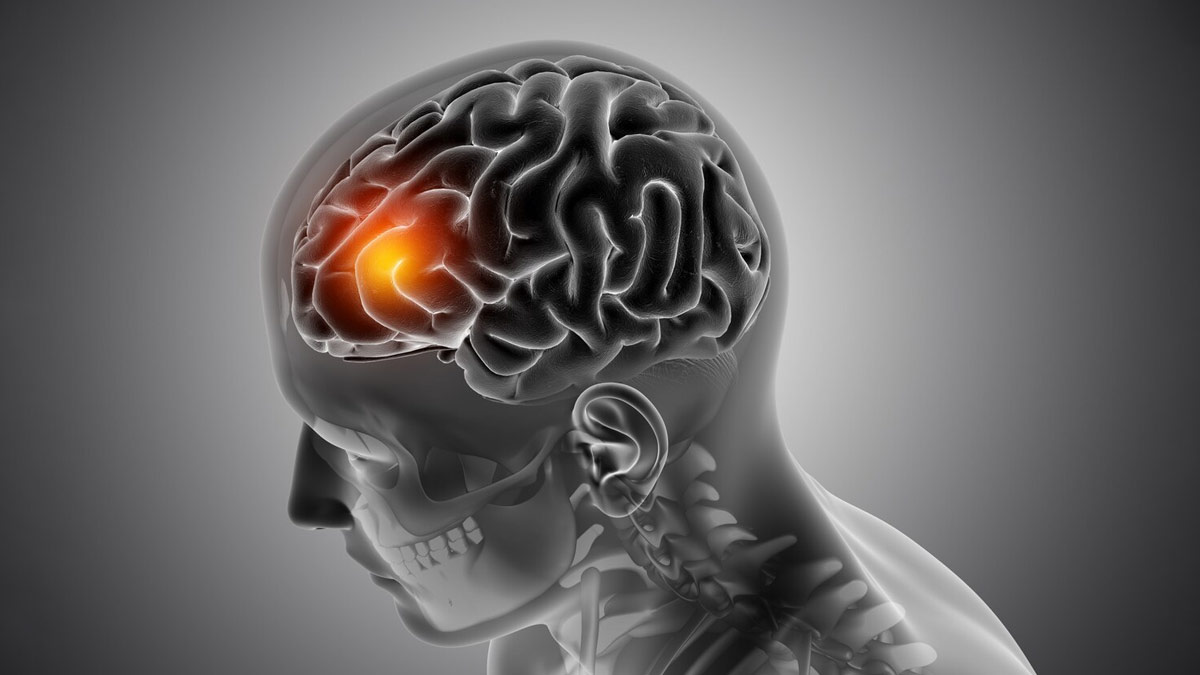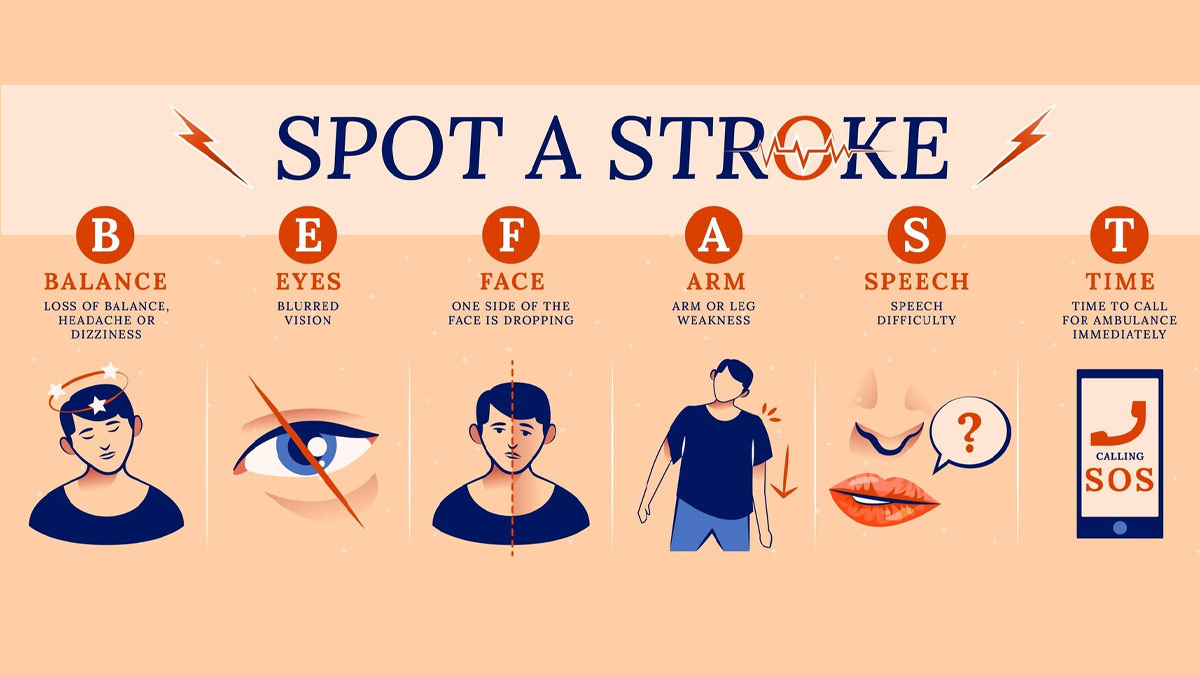
When we hear the word ‘stroke,’ chills run down our spine and for all the right reasons. A stroke is a terrible medical emergency, in which blood supply to the brain is cut off, resulting in damage to brain cells. It can lead to permanent disability, such as speech impairment, paralysis, and memory loss, and even death. However, while not all strokes can be prevented, a large majority of them can be. By knowing the risk factors and taking measures ahead of time, you can significantly lower your risk of having this life-changing event.
Table of Content:-
So, to better understand it, we got in touch with our expert, Dr Shrey Kumar Srivastav, Senior Consultant and General Physician, Sharda Hospital - Noida, and asked if one can avoid a stroke? The answer, according to him, is a big yes, in most instances. “It's simply a matter of identifying the hidden dangers and arming yourself with awareness and healthy living,” he pointed out. Read ahead to know the importance of knowing how!
Modifiable Risk Factors for Stroke
Most of the risk factors for a stroke are modifiable, which means that you are in control. Here is a look at the most prevalent ones:
1. High Blood Pressure (Hypertension)
Hypertension of high BP is the most critical risk factor for stroke. Uncontrolled high blood pressure causes damage to blood vessels, which are more likely to narrow, harden, or burst.
2 High Cholesterol
Elevated LDL (bad) cholesterol levels lead to the accumulation of plaque in arteries, known as atherosclerosis, which may occlude blood supply to the brain.

Also Read: How Makeup Might be Causing Acne in the Monsoon, Learn From Cosmetologist
3. Diabetes
Diabetes causes damage to blood vessels all over the body, including those that feed the brain, and raises the risk of both ischemic (clot) and hemorrhagic (bleeding) strokes.
4. Smoking
Nicotine and carbon monoxide in tobacco smoke harm blood vessels, raise blood pressure, and make blood more likely to clot. Smoking dramatically increases your stroke risk.
5. Obesity and Physical Inactivity
Overweight and obesity are contributing factors to the development of other risk factors such as high blood pressure, high cholesterol, and diabetes. Physical inactivity amplifies these risks.
6. Atrial Fibrillation (AFib)
This abnormal heart rhythm can result in the pooling of blood in the heart, creating the formation of clots that can travel to the brain and result in a stroke.
7. Carotid Artery Disease
The carotid arteries in the neck provide blood supply to the brain. Plaque inside these arteries can cause them to narrow, leading to a higher risk of stroke.
8. Poor Diet
Saturated and trans fat, cholesterol, sodium, and refined sugar-rich diets lead to high blood pressure, high cholesterol, and obesity.
9. Excessive Alcohol Use
Excessive alcohol use is known to increase blood pressure, lead to AFib, and raise the risk of hemorrhagic stroke.

Also Read: Can Exercising Regularly Reverse Fatty Liver? Expert Weighs In
What Should Be Your Stroke Prevention Action Plan
Prevention of a stroke is in large part within your control. Dr Srivastav shared with us a detailed action plan. Here’s how it goes:
1. Know Your Numbers and Control Them
- Get Regular Check-ups: See your doctor for regular checks on your blood pressure, cholesterol, and blood sugar levels.
- Control Blood Pressure: If you have high blood pressure, collaborate with your physician to get it under control through lifestyle modifications and, if required, medication. Strive for a healthy reading, usually below 120/80 mmHg.
- Control Cholesterol: Follow a heart-healthy diet and consider cholesterol-lowering drugs with your doctor if required.
- Control Diabetes: If you have diabetes, follow your treatment regimen, check your blood sugar, and make appropriate dietary changes.
2. Choose a Healthy Lifestyle
Eat a Balanced Diet: Emphasise whole, unprocessed foods. Include a lot of fruits, vegetables, whole grains, lean proteins, and healthy fats. Keep red meat, processed foods, sweetened drinks, and a lot of sodium to a minimum. The Mediterranean diet is usually suggested due to its stroke-protective effects.
2. Be Active Physically
Aim for 150 minutes of moderate-intensity aerobic physical activity or 75 minutes of vigorous-intensity aerobic physical activity a week. Add strength training activity to your routine two times a week. Even a little activity during the day can help.
3. Stay at a Healthy Weight
If you're overweight or obese, even a small weight loss will lower your risk for stroke.
4. Quit Smoking
This is perhaps the most effective thing you can do. Find support programs and resources to assist you in quitting for life.
5. Cut Down Alcohol Consumption
If alcohol is your vice, consume it in moderation. This translates to one drink a day for women and two for men.
Bottomline
Stopping a stroke is a process, not a goal. It takes ongoing effort and dedication to your well-being. By learning your individual risk factors and taking deliberate steps to avoid them through healthy lifestyle habits and medical control, you can lower your risk of having a stroke and enjoy a healthier, and longer life.
Also watch this video
How we keep this article up to date:
We work with experts and keep a close eye on the latest in health and wellness. Whenever there is a new research or helpful information, we update our articles with accurate and useful advice.
Current Version